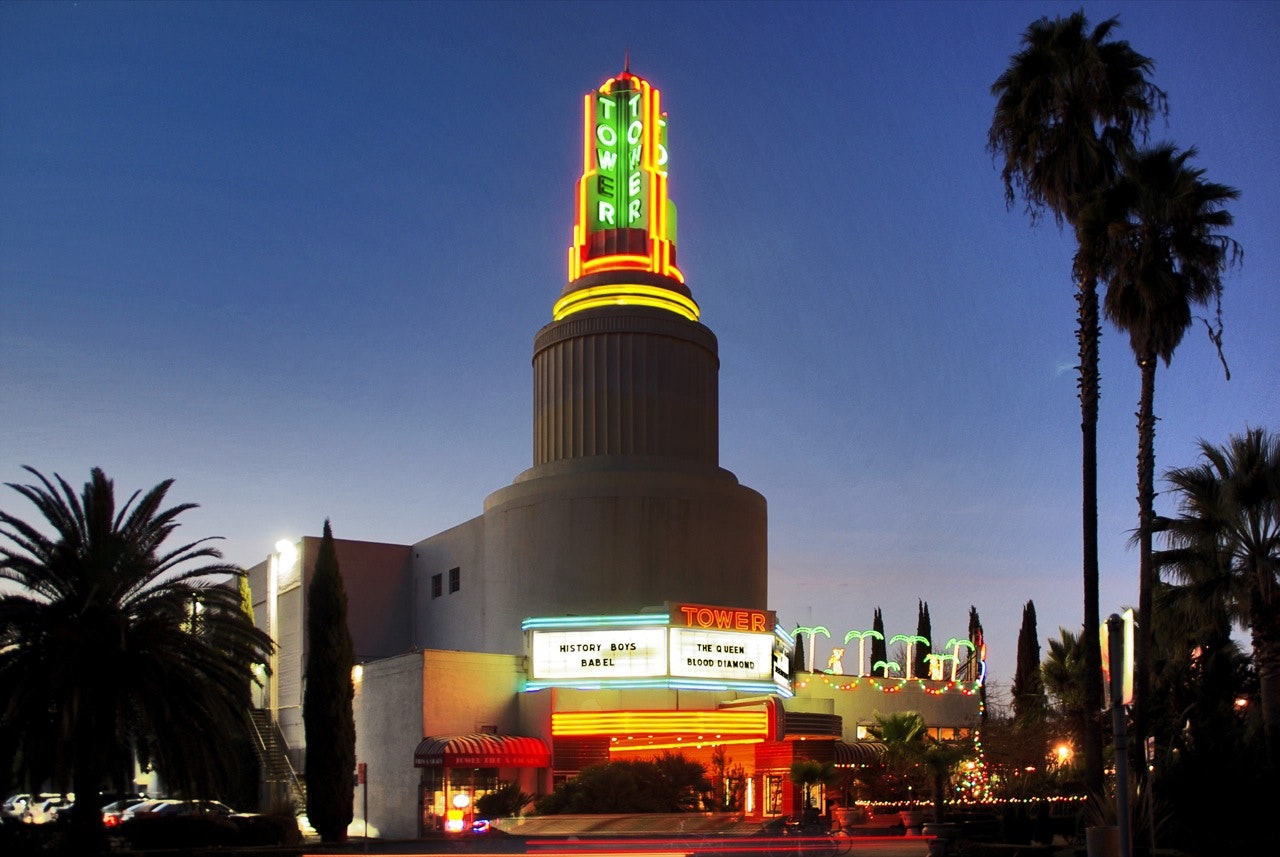The Tower District - History
The Tower District/Greater Broadway area has long been a viable, albeit eclectic, commercial corridor. It features a variety of retail and commercial enterprises and is the location of a multitude of ethnic and mainstream restaurants. It hosts one of the largest certified Farmer’s Markets in the Sacramento region and recently became the site of a popular monthly antique fair. The bustling activity of Broadway is rooted in its history as a nucleus of local industry and commerce.
Broadway (formerly Y Street) was the southernmost street in the original city grid of Sacramento, platted in 1848.
Because of its proximity to the Sacramento River and the railroad, the west end of Broadway became a hub of industrial activity. Goods could be shipped via boat to ports in the Bay Area, or via train across the continental United States. Likewise, raw goods could be transported to Broadway for processing and for sale. Further east, the corridor developed in the 1920s and 1930s to serve the growing neighborhoods of Curtis Park and Land Park, some of Sacramento’s earliest suburbs. By 1937, Broadway had nine restaurants, two doughnut shops, two bakeries, an ice cream maker, and several food stores. Many of these historical uses, particularly restaurants and food and beverage distributors persist in the District today.


Broadway became home to civic functions, including the City Cemetery (1849) and the Buffalo Recreation Grounds (1911), a baseball stadium. The Tower Theater opened in December 1938, prompting the City to rename the street Broadway.
The Tower Theater’s art deco architecture influenced the design of many other buildings in the District, and it remains Broadway’s most iconic building.

While the baseball park is gone, the cemetery’s fascinating monuments and fragrant gardens tell stories from Sacramento’s past to modern visitors. (More interesting stories: History )
The W-X freeway, which links Highway 5 to Highway 99, opened in 1968. It created a barrier between the Broadway District and the rest of the center city. Yet business on Broadway continued to thrive, buttressed by vibrant residential communities to its south, and easy freeway access at each end. Today, Broadway has much to offer. It is an entertainment hub, a neighborhood and regional shopping corridor, a haven for incredibly diverse restaurants, a place to live and work, and a sunny boulevard for a Sunday cruise or walk.
Fun Facts about the Greater Broadway District
Tower Records, on the corner of 16th and Broadway, was founded in 1960 by Russ Solomon. Russ started selling records in his father’s drugstore, which shared a building and name with Tower Theater.
Originally called the Bell Agricultural Experiment Station, the structure was built in 1878 through a donation from Margaret Crocker. Its primary charge was to encourage growth and experimentation with exotic plants and flowers, but also to provide a spot where the poor of the city could obtain free flowers to set on the graves of their loved ones at the City Cemetery. It was torn down in 1957 to build a Safeway. It is now home to Sellands, Bike Dog Brewing, and Silva Stowell Architects.
Nine people operate restaurants on Y Street, all still identified only by their owner’s names. There are also two doughnut shops, two bakeries, and several food shops. The year: 1937.
China Wagon is the original home of Sam’s Original Ranch Wagon, which opened in 1827.
Taco Bell, the first national fast food chain, opens on Broadway. The year: 1967.

.jpg?ixlib=rb-1.1.0&or=0&w=720&h=720&fit=max&auto=format%2Ccompress&s=68b487f0aa840b68969d59c7a97e8b9e)